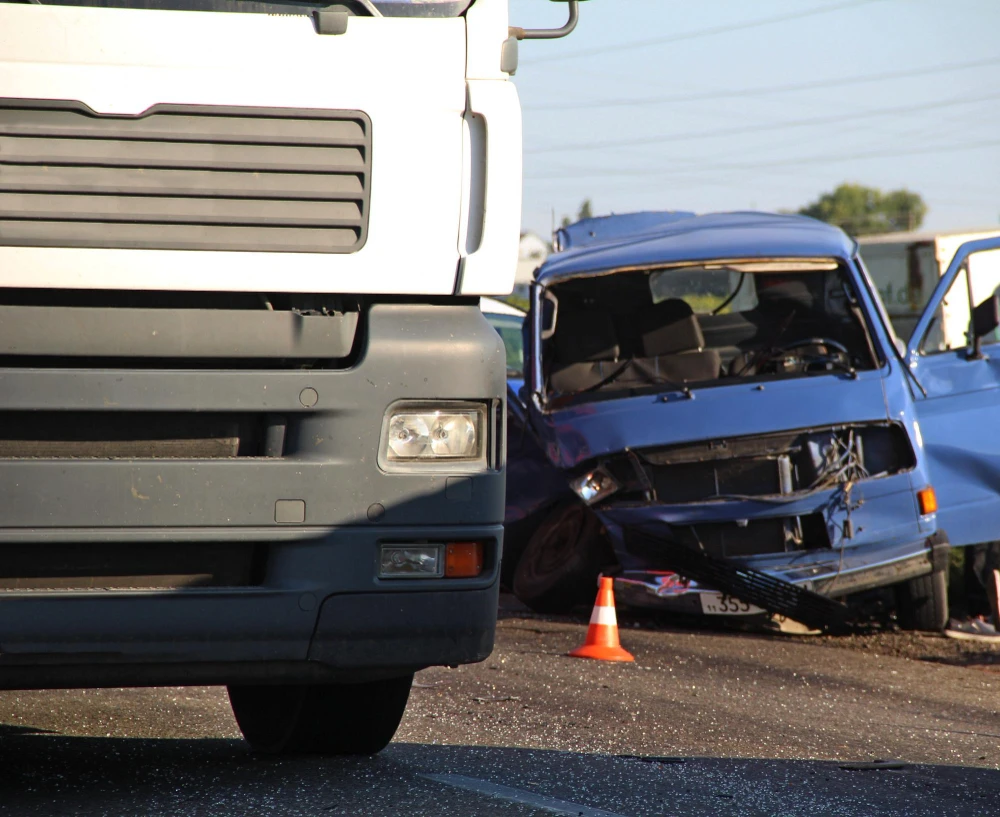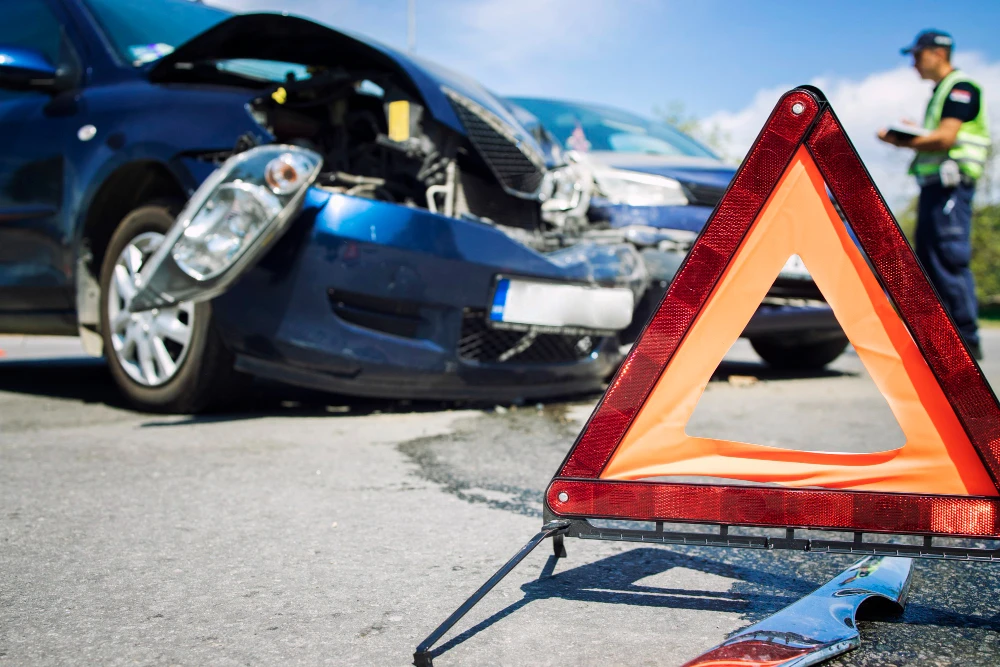What are the three types of collisions that occur during a motor vehicle crash?
There are many motor accidents on roads and highways around the world every day. These accidents can vary in severity, but they all share a common characteristic: collisions.
Vehicle accidents may involve different collisions, each having its own set of dynamics and consequences. Understanding these collisions is pivotal for the understanding of road safety complexities and their effect on vehicle occupants.
Let us delve into the realm of motor vehicle crashes and the three primary varieties of collisions that occur during such occasions and get the answer to, “What are the three types of collisions” that occur during a motor vehicle crash?
The best Houston auto accident lawyer can help you deal with all sorts of cases, including all types of collisions.
Primary Collision
The primary collision’s initial impact lies at the heart of every accident and sets the wheels of chaos in a roll. The primary collision is like decoding the first chapter in the story of a crash; its impact, trajectory, and consequence set the stage for what comes after.
When a motor vehicle collision happens, the first impact is of the initial crash that triggers everything else. It is crucial, therefore, to understand the forces and factors at play during this critical time.
Inertia: One of the basic impacts of primary impact is inertia. Objects in motion have a tendency to stay that way unless influenced by some outside force. When a crash takes place, the car and the passenger’s inertia are moving at that speed, and a great amount of force is needed to stop this momentum. This forceful impact occurs due to the vehicle’s inertia and a rather abrupt deceleration.
Kinetic Energy: The kinetic energy of a moving vehicle is proportional to its mass and velocity. In a crash, the conversion of kinetic energy into destructive forces makes the primary impact so strong.
Factors Contributing to the Impact
There are a number of actors that can cause the impact, these include:
- Vehicle speed at the instant of collision also plays a significant role. Faster movement definitely results in more devastating crashes and higher kinetic energy. The smallest change in speed can drastically alter the power of impact.
- The forces during vehicular collision vary depending on the angle of impact. For instance, head-on collisions usually have more severe impacts than side or rear-end collisions.
- Large trucks or SUV collisions can create very significant forces.
- Seat belts, airbags, and other restraint systems can lessen the forces acting on vehicle passengers. The correct use of safety equipment can minimize injury during the first impact.
- Vehicle design involves the design and construction of vehicles, such as crumple zones and structural integrity, in which energy is absorbed safely during a collision.
Immediate Aftermath
Vehicle passengers may be subject to sudden deceleration after the primary impact, resulting in them being forced forward into their seats. This movement may cause injuries, especially when seat belts and airbags are not engaged or do not work.
Deformation of the vehicle’s structure could occur as it absorbs some energy from the collision. Crush zones that crumple up in a predetermined manner can relieve forces to protect the occupants.
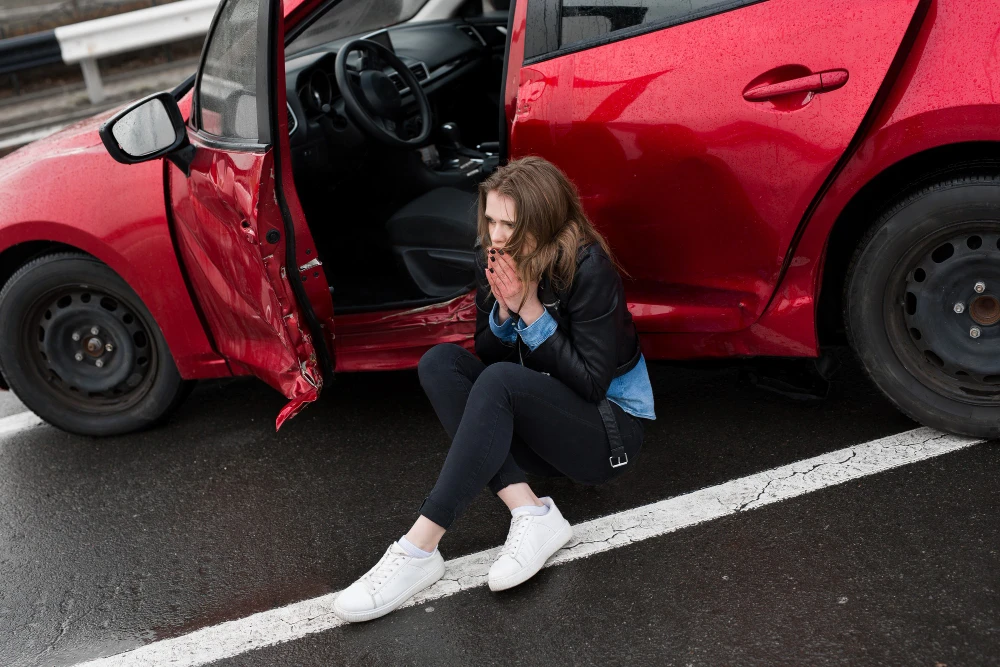
Secondary Collisions
The first collision in the chaotic aftermath of a motor vehicle crash is just the beginning. More often than not, the secondary collisions take place just a few seconds after the primary impact and make the situation even more complex. Understanding these secondary collisions is essential for a comprehensive grasp of the dynamics and consequences of motor vehicle accidents.
Types of Secondary Collisions
- Vehicle-to-Vehicle Collisions: These are when one or more vehicles involved in the main crash continue to hit other vehicles in their way. This can trigger a cascade effect, where several vehicles get involved in subsequent impacts.
- Vehicle-to-Object Collisions: In some cases, cars may strike static objects such as guardrails, poles, trees, or road markers after the initial collision. Such collisions can result in additional damage and injuries.
- Rollover Collisions: The impact of a primary collision can potentially make a car overturn or roll. Rollover collisions are very dangerous and can cause vehicle occupants to get out of the car or be trapped inside it.
Causes of Secondary Collisions
Collisions in congested traffic conditions or highways with high-speed limits are more likely to constitute secondary collisions. Those accidents may occur due to limited space and decreased visibility. Also, the primary collision may cause the drivers involved in it to panic, overreact, or lose control of their vehicles and generate secondary collisions. Even modern braking systems will need a certain distance for the vehicle to be stopped completely.
Consequences and Injuries
Secondary collisions further intensify the destruction and injuries caused by the initial effect. People who survived the first impact may face more danger in subsequent collisions.
Drivers of vehicles may suffer injuries ranging from whiplash and head trauma to broken bones because they can be hit by other moving vehicles or various objects.
In particular, rollover collisions can result in severe injuries and deaths.
Chain Reactions
These chain reactions can result in severe destruction, injuries, and roads blocked off.
Law enforcement and fatality responders are often challenged in the maintenance and clearance of accident scenes with secondary collisions.
Knowledge about secondary collisions is important in making a full evaluation of motor vehicle accidents. Such secondary collisions can make rescue and recovery work much more involved, emphasize the necessity of vehicle safety features, and reinforce the importance of prudent driving for avoiding secondary collisions following a crash.
Tertiary Collisions
Tertiary collisions are the next level in complexity after a motor vehicle crash. The primary and secondary collisions are usually the starting point of a chain reaction due to these collisions. Understanding tertiary collisions involves delving into the interconnected events that can unfold after the initial impact:
Chain Reaction Effect
A process that is often referred to as chain reaction collisions because of the whole chaos from primary and secondary impacts are basically usually known as tertiary collisions.
It may start with just a few vehicles and objects becoming entangled in a series of chain reaction collisions before evolving into an increasingly complex situation involving many causes, multiple elements, and countless offshoots.
Contributing Factors to Tertiary Collisions
Multi-vehicle pile-ups are one of the common cases where tertiary collisions occur. They occur when several vehicles are on the road, and they involve a chain reaction of collisions. New collisions can set off subsequent impacts because vehicles do not stop completely.
Tertiary collisions also occur when there is poor visibility due to adverse weather conditions such as fog, heavy rain, or snow. Drivers may have difficulty seeing the road ahead and responding immediately to prevent further collisions. Also, as the situation develops, drivers might panic or make sudden movements to avoid those collisions and, in the process, cause tertiary collisions.
When there is traffic congestion, it can be very difficult for vehicles to stop quickly, especially if they have been tailgating. This may result in a chain reaction of collisions.
Contact Mokaram Law Firm!
In order to get your cases regarding any kind of collision sorted, it is very important to connect with the best lawyers out there. Mokaram Law Firm provides you with the best attorneys who can help you get through the complexities of your cases without even putting too much effort. So, dial (281) 609-9224 now to get your consultation booked.
Recent Posts
-
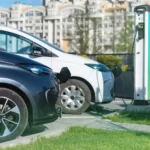 26 Jan 2024Electric Vehicles and Road Safety: Navigating the Impact on Car Accidents in 2024?
26 Jan 2024Electric Vehicles and Road Safety: Navigating the Impact on Car Accidents in 2024? -
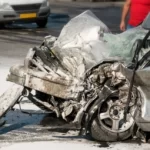 26 Jan 2024What are the three types of collisions that occur during a motor vehicle crash?
26 Jan 2024What are the three types of collisions that occur during a motor vehicle crash? -
 26 Jan 2024How are truck accidents different than car accidents?
26 Jan 2024How are truck accidents different than car accidents? -
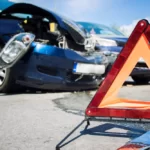 26 Jan 2024What is the difference between a car accident and a car injury?
26 Jan 2024What is the difference between a car accident and a car injury? -
 26 Jan 2024How a Houston Injury Lawyer Can Assist You?
26 Jan 2024How a Houston Injury Lawyer Can Assist You? -
 26 Jan 2024When Can Kids Ride in the Front Seat of a Car in Texas?
26 Jan 2024When Can Kids Ride in the Front Seat of a Car in Texas? -
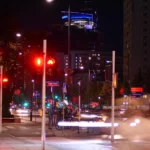 19 Jan 2024Risks of Running Red Lights in Houston, Texas
19 Jan 2024Risks of Running Red Lights in Houston, Texas -
 19 Jan 2024Estimating Compensation After a Houston Car Accident
19 Jan 2024Estimating Compensation After a Houston Car Accident -
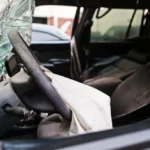 19 Jan 2024Conquering Driving Fears After a Houston Car Crash
19 Jan 2024Conquering Driving Fears After a Houston Car Crash -
 19 Jan 2024What is the most common injury in a truck accident?
19 Jan 2024What is the most common injury in a truck accident? -
 19 Jan 2024What is the traffic management system for safety in the USA?
19 Jan 2024What is the traffic management system for safety in the USA? -
 19 Jan 20245 Ways Personal Injury Laws May Change in 2024
19 Jan 20245 Ways Personal Injury Laws May Change in 2024


